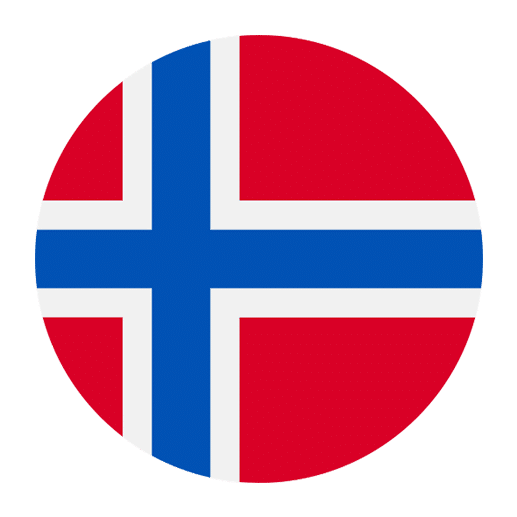Translating scientific texts from Norwegian into English can be a rewarding yet challenging endeavor. Scientific literature often contains highly specialized terminology, complex sentence structures, and specific conventions that can be difficult to navigate. Whether you are a professional translator, a student, or an academic looking to translate your own work, the following tips can help you produce accurate and high-quality translations.
Understanding the Source Text
Familiarize Yourself with the Subject Matter
Before starting the translation, ensure you have a good understanding of the subject matter. Scientific texts are often dense with specialized terminology and concepts that require a certain level of expertise. If you are not already familiar with the field, take the time to read related literature in both Norwegian and English to build a solid foundation of knowledge.
Read the Entire Text First
It’s tempting to start translating right away, but taking the time to read the entire text first can save you a lot of trouble later on. By understanding the overall structure and main arguments of the text, you can better grasp how different parts of the document relate to each other. This will also help you maintain consistency in terminology and tone throughout your translation.
Identify Key Terms and Phrases
As you read through the text, make a list of key terms and phrases. Look them up in specialized dictionaries or glossaries specific to the scientific field. This will not only help you understand the text better but also ensure that you use the correct terminology in your translation.
Translation Techniques
Literal vs. Free Translation
Deciding whether to translate literally or more freely can be tricky. A literal translation might capture the exact meaning of each word but can result in awkward or unclear sentences in English. On the other hand, a free translation might be more readable but risks losing some of the original text’s nuances. Striking a balance between the two approaches is crucial, and this often comes with experience and a deep understanding of both languages.
Maintain Scientific Rigor
Scientific texts are characterized by their precision and clarity. Avoid introducing any ambiguity or personal interpretations into your translation. Stick as closely as possible to the original meaning, and ensure that all scientific data and findings are presented accurately.
Use Parallel Texts
Parallel texts—documents that are available in both Norwegian and English—can be invaluable resources. They provide real-world examples of how specific terms and phrases have been translated in the past. Look for articles, papers, or reports in your field that have been published in both languages and use them as references.
Linguistic Considerations
Grammar and Syntax
Norwegian and English have different grammatical structures, so pay close attention to syntax when translating. Norwegian often uses compound words that might need to be broken down into phrases in English. Additionally, Norwegian sentences can be quite long and complex, so consider breaking them into shorter sentences for better readability in English.
False Friends
False friends are words that look similar in both languages but have different meanings. For example, the Norwegian word “eventuelt” might be mistaken for “eventually,” but it actually means “possibly” or “if applicable.” Be cautious of such words and always double-check their meanings in context.
Idiomatic Expressions
Scientific texts are less likely to contain idiomatic expressions compared to other types of writing, but they can still appear, especially in introductory or concluding sections. When you encounter idiomatic expressions, try to find an equivalent expression in English rather than translating them word-for-word.
Tools and Resources
Specialized Dictionaries and Glossaries
Invest in good-quality specialized dictionaries and glossaries specific to the scientific field you are working in. Online resources like TermWiki, IATE (Interactive Terminology for Europe), and specialized glossaries provided by scientific organizations can also be extremely helpful.
Translation Software
While machine translation tools like Google Translate can be useful for getting the gist of a text, they are not reliable for scientific translations. More advanced tools like SDL Trados, memoQ, and Wordfast offer features specifically designed for professional translators, such as terminology management and translation memory.
Peer Review and Collaboration
If possible, collaborate with experts in the field or other translators. Peer review can provide valuable feedback and help you catch errors you might have missed. Online forums and communities for translators, such as ProZ and TranslatorsCafe, can also be excellent places to seek advice and share knowledge.
Quality Assurance
Proofreading and Editing
Once you have completed your translation, take the time to proofread and edit your work. Look for any grammatical errors, awkward phrasings, or inconsistencies in terminology. Reading your translation out loud can help you identify areas that need improvement.
Consistency Checks
Ensure that your translation is consistent in terms of terminology, style, and formatting. Consistency is especially important in scientific texts, where the same term might appear multiple times throughout the document. Using a terminology management tool can help you keep track of key terms and ensure they are used consistently.
Final Review
Before submitting your translation, do a final review to ensure that it accurately reflects the original text. Double-check all scientific data, figures, and references to make sure they have been translated correctly. If possible, have a native speaker of English who is also familiar with the scientific field review your translation for any remaining issues.
Ethical Considerations
Confidentiality
Scientific texts often contain sensitive information, such as unpublished research data or proprietary technology. Always maintain strict confidentiality and follow any guidelines provided by your client or employer regarding the handling of confidential information.
Attribution and Plagiarism
When translating scientific texts, it is important to give proper attribution to the original authors. Ensure that all citations and references are accurately translated and formatted according to the relevant style guide (e.g., APA, MLA, Chicago). Avoid any form of plagiarism by clearly distinguishing between your own work and the original text.
Conclusion
Translating Norwegian scientific texts into English is a complex task that requires a deep understanding of both languages, as well as expertise in the specific scientific field. By familiarizing yourself with the subject matter, using appropriate translation techniques, and leveraging specialized tools and resources, you can produce high-quality translations that accurately convey the original text’s meaning and scientific rigor. Always remember to proofread and review your work carefully, and seek feedback from peers and experts whenever possible. With practice and dedication, you can become proficient in translating scientific texts and contribute to the global dissemination of knowledge.

